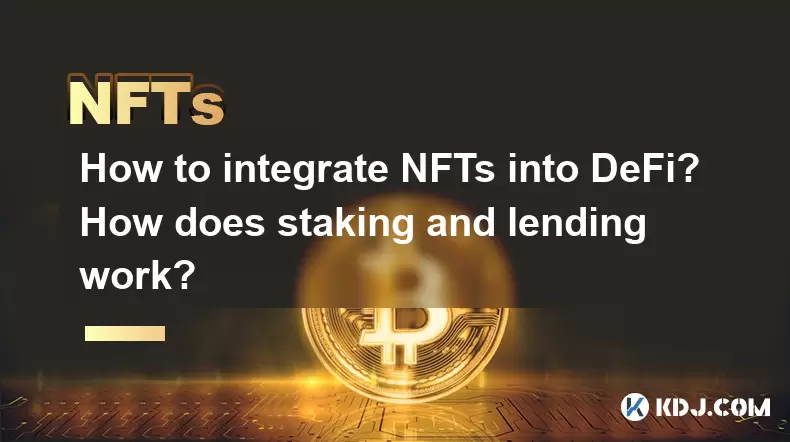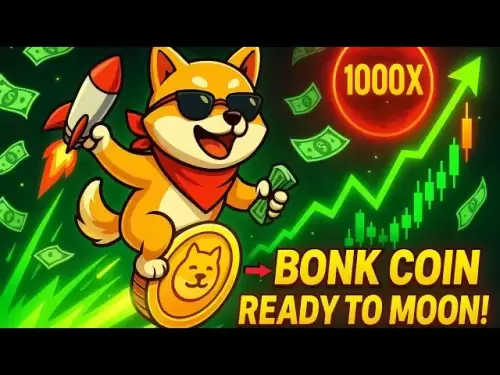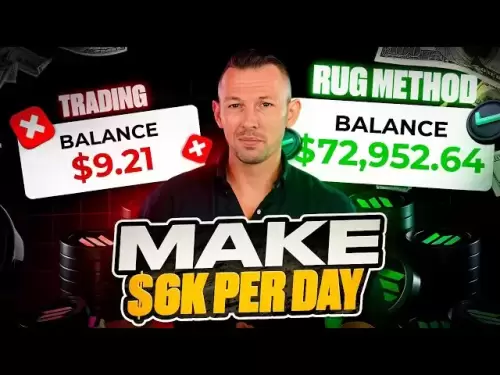-
 Bitcoin
Bitcoin $114800
-3.31% -
 Ethereum
Ethereum $3641
-5.84% -
 XRP
XRP $2.948
-6.36% -
 Tether USDt
Tether USDt $0.9998
-0.03% -
 BNB
BNB $772.4
-3.97% -
 Solana
Solana $169.1
-6.68% -
 USDC
USDC $0.9999
-0.01% -
 Dogecoin
Dogecoin $0.2056
-8.09% -
 TRON
TRON $0.3247
-0.18% -
 Cardano
Cardano $0.7239
-7.43% -
 Hyperliquid
Hyperliquid $39.71
-8.60% -
 Stellar
Stellar $0.3912
-7.84% -
 Sui
Sui $3.510
-10.17% -
 Chainlink
Chainlink $16.59
-8.03% -
 Bitcoin Cash
Bitcoin Cash $560.5
-3.65% -
 Hedera
Hedera $0.2464
-10.08% -
 Avalanche
Avalanche $22.03
-7.87% -
 Ethena USDe
Ethena USDe $1.001
-0.02% -
 UNUS SED LEO
UNUS SED LEO $8.947
0.21% -
 Toncoin
Toncoin $3.389
-2.58% -
 Litecoin
Litecoin $104.9
-5.23% -
 Shiba Inu
Shiba Inu $0.00001220
-6.67% -
 Polkadot
Polkadot $3.652
-6.10% -
 Uniswap
Uniswap $9.213
-9.05% -
 Monero
Monero $307.2
-2.93% -
 Dai
Dai $0.9998
-0.02% -
 Bitget Token
Bitget Token $4.367
-2.89% -
 Cronos
Cronos $0.1374
-6.80% -
 Pepe
Pepe $0.00001056
-8.65% -
 Aave
Aave $257.3
-7.31%
How to integrate NFTs into DeFi? How does staking and lending work?
Integrating NFTs into DeFi via collateralization, fractionalization, and staking enhances their utility and liquidity, expanding DeFi's capabilities.
May 16, 2025 at 03:42 am

Integrating Non-Fungible Tokens (NFTs) into Decentralized Finance (DeFi) represents a fascinating intersection of two rapidly evolving sectors within the cryptocurrency ecosystem. This integration can enhance the utility and liquidity of NFTs, while also expanding the capabilities of DeFi platforms. In this article, we will explore how NFTs can be integrated into DeFi, and delve into the mechanics of staking and lending within this context.
Understanding NFTs and DeFi
Non-Fungible Tokens (NFTs) are unique digital assets that represent ownership or proof of authenticity of a specific item or piece of content, typically stored on a blockchain. These can range from digital art and collectibles to virtual real estate and in-game items. Decentralized Finance (DeFi), on the other hand, refers to financial services and applications built on blockchain technology, offering services like lending, borrowing, and trading without the need for traditional financial intermediaries.
Integrating NFTs into DeFi
Integrating NFTs into DeFi can be achieved through several innovative mechanisms, each designed to enhance the functionality and value of both NFTs and DeFi platforms.
NFT Collateralization
One of the primary ways to integrate NFTs into DeFi is through collateralization. In this model, NFT owners can use their tokens as collateral to borrow other cryptocurrencies or stablecoins. This process involves:
- Appraisal: Determining the value of the NFT, often through a marketplace or an appraisal service.
- Locking: The NFT is locked in a smart contract as collateral.
- Borrowing: The owner can then borrow against the value of the NFT, typically up to a certain percentage of its appraised value.
- Repayment: The loan must be repaid with interest within a specified period, or the NFT may be liquidated.
This method allows NFT holders to access liquidity without selling their assets, thereby maintaining ownership while benefiting from the financial flexibility offered by DeFi.
NFT Fractionalization
Another approach is NFT fractionalization, where a single NFT is divided into smaller, tradable units. This process involves:
- Tokenization: Creating a new token that represents a fraction of the original NFT.
- Distribution: These fractional tokens can be sold or traded on DeFi platforms, allowing more people to invest in high-value NFTs.
- Governance: Holders of fractional tokens may have voting rights or other governance powers over the NFT.
Fractionalization increases the liquidity of NFTs and allows for broader participation in the ownership of valuable digital assets.
NFT Staking
NFT staking is another innovative way to integrate NFTs into DeFi. In this model, NFT holders can stake their tokens to earn rewards, similar to staking cryptocurrencies. The process typically involves:
- Staking: The NFT is locked in a smart contract for a specified period.
- Earning: The staker earns rewards, which can be in the form of the platform's native token or other cryptocurrencies.
- Unlocking: After the staking period, the NFT is returned to the owner along with the earned rewards.
Staking NFTs can provide a passive income stream for holders, incentivizing them to keep their assets within the DeFi ecosystem.
Staking in DeFi
Staking is a fundamental component of many DeFi platforms, allowing users to earn rewards by locking up their assets. Here’s how staking typically works in DeFi:
Choosing a Staking Platform
To begin staking, users must first select a suitable DeFi platform. Factors to consider include:
- Security: The platform’s track record and security measures.
- Rewards: The rate of return offered for staking.
- Lock-up Period: The duration for which assets must be staked.
Staking Process
Once a platform is chosen, the staking process involves:
- Connecting a Wallet: Users connect their cryptocurrency wallet to the DeFi platform.
- Selecting Assets: Choosing which assets to stake, which can include native tokens or other supported cryptocurrencies.
- Locking Assets: Transferring the chosen assets to the staking contract.
- Earning Rewards: Over time, stakers earn rewards based on the platform’s reward distribution mechanism.
Staking can be a lucrative way to earn passive income, but it also comes with risks, such as the potential for platform hacks or changes in reward rates.
Lending in DeFi
Lending is another core function of DeFi, allowing users to lend their assets to others in exchange for interest. Here’s how lending typically works in DeFi:
Choosing a Lending Platform
Similar to staking, the first step in lending is selecting a reliable DeFi lending platform. Considerations include:
- Interest Rates: The rates offered for lending different assets.
- Collateral Requirements: The types of collateral accepted and the loan-to-value ratios.
- Platform Stability: The platform’s history and stability.
Lending Process
Once a platform is chosen, the lending process involves:
- Depositing Assets: Users deposit their assets into the lending pool.
- Setting Terms: Specifying the terms of the loan, such as interest rate and duration.
- Earning Interest: As borrowers take out loans, lenders earn interest on their deposited assets.
- Withdrawing: Lenders can withdraw their assets at any time, subject to the platform’s rules.
Lending in DeFi can provide a steady income stream, but it also involves risks, such as the potential for borrower default or platform insolvency.
NFTs in DeFi Lending
Integrating NFTs into DeFi lending can be particularly interesting. Here’s how it works:
NFT-Backed Loans
NFTs can be used as collateral for loans, allowing owners to borrow against their digital assets. The process involves:
- Valuation: Assessing the value of the NFT.
- Collateralization: Locking the NFT in a smart contract as collateral.
- Borrowing: Borrowing against the NFT’s value, typically up to a certain percentage.
- Repayment: Repaying the loan with interest to retrieve the NFT.
This method allows NFT owners to access liquidity without selling their assets, providing a new avenue for financial flexibility.
NFT Lending Platforms
Some DeFi platforms specialize in NFT lending, offering unique features such as:
- NFT-Specific Valuation: Algorithms or marketplaces dedicated to appraising NFTs.
- Flexible Terms: Customizable loan terms tailored to the unique nature of NFTs.
- Secondary Markets: Platforms that allow for the trading of NFT-backed loans.
These platforms can enhance the liquidity and utility of NFTs, making them more attractive to both owners and investors.
Frequently Asked Questions
Q: Can NFTs be used as collateral for loans in any DeFi platform?
A: Not all DeFi platforms support NFT collateralization. It depends on the platform’s capabilities and the specific smart contracts they have implemented. Always check the platform’s documentation to see if NFT-backed loans are supported.
Q: What happens if the value of an NFT used as collateral drops significantly?
A: If the value of an NFT used as collateral falls below a certain threshold, the loan may be subject to liquidation. The borrower would need to either repay the loan or add more collateral to avoid losing the NFT.
Q: Are there any risks associated with staking NFTs?
A: Yes, staking NFTs carries risks such as smart contract vulnerabilities, platform hacks, and the potential for changes in reward structures. It’s important to thoroughly research the platform and understand the terms before staking.
Q: How can I ensure the security of my NFTs when integrating them into DeFi?
A: To ensure the security of your NFTs, use reputable platforms with strong security measures, always verify smart contract addresses, and consider using hardware wallets for added protection. Regularly monitor your assets and stay informed about potential security threats.
Disclaimer:info@kdj.com
The information provided is not trading advice. kdj.com does not assume any responsibility for any investments made based on the information provided in this article. Cryptocurrencies are highly volatile and it is highly recommended that you invest with caution after thorough research!
If you believe that the content used on this website infringes your copyright, please contact us immediately (info@kdj.com) and we will delete it promptly.
- Bitcoin, Ethereum, and Investor Behavior: A New York Minute on Crypto Trends
- 2025-08-01 15:10:12
- Tether's Q2 Triumph: USDT Supply Soars Amidst Profit Surge!
- 2025-08-01 15:10:12
- Ethereum ETF Holdings: A Corporate Treasury Revolution?
- 2025-08-01 15:30:12
- Ethereum's Wild Ride: Funding Rates, Price Drops, and Retail to the Rescue!
- 2025-08-01 15:30:12
- Ethereum Under Pressure: Crypto Market Drop Explained
- 2025-08-01 15:35:11
- Ethereum ETF Mania: Inflows Surge, Market Rises, What's Next?
- 2025-08-01 15:35:11
Related knowledge

Is it possible to get a refund on an NFT?
Jul 21,2025 at 08:35pm
Understanding NFT Transactions and RefundsWhen you purchase an NFT (Non-Fungible Token), the transaction is typically recorded on a blockchain, making...

What happens to NFTs when the owner dies?
Jul 22,2025 at 02:43pm
Legal Ownership and Digital AssetsWhen an individual owns NFTs, the question of what happens to these assets upon their death is a pressing one. NFTs ...

What are the tax implications of gifting an NFT?
Jul 19,2025 at 04:21am
Understanding the Basics of NFT GiftingGifting a Non-Fungible Token (NFT) involves transferring ownership from one individual to another without recei...

Can you trade NFTs on your phone?
Jul 18,2025 at 04:29am
Trading NFTs on Mobile DevicesYes, you can trade NFTs on your phone, and the process has become increasingly streamlined thanks to a variety of mobile...

How to find out about upcoming NFT mints?
Jul 18,2025 at 11:50am
Exploring NFT Minting OpportunitiesUnderstanding the landscape of upcoming NFT mints is crucial for collectors, investors, and creators who wish to st...

What is an allowlist or whitelist for an NFT mint?
Jul 20,2025 at 07:14pm
Understanding the Concept of an Allowlist for NFT MintingAn allowlist, also commonly referred to as a whitelist, is a mechanism used in the NFT mintin...

Is it possible to get a refund on an NFT?
Jul 21,2025 at 08:35pm
Understanding NFT Transactions and RefundsWhen you purchase an NFT (Non-Fungible Token), the transaction is typically recorded on a blockchain, making...

What happens to NFTs when the owner dies?
Jul 22,2025 at 02:43pm
Legal Ownership and Digital AssetsWhen an individual owns NFTs, the question of what happens to these assets upon their death is a pressing one. NFTs ...

What are the tax implications of gifting an NFT?
Jul 19,2025 at 04:21am
Understanding the Basics of NFT GiftingGifting a Non-Fungible Token (NFT) involves transferring ownership from one individual to another without recei...

Can you trade NFTs on your phone?
Jul 18,2025 at 04:29am
Trading NFTs on Mobile DevicesYes, you can trade NFTs on your phone, and the process has become increasingly streamlined thanks to a variety of mobile...

How to find out about upcoming NFT mints?
Jul 18,2025 at 11:50am
Exploring NFT Minting OpportunitiesUnderstanding the landscape of upcoming NFT mints is crucial for collectors, investors, and creators who wish to st...

What is an allowlist or whitelist for an NFT mint?
Jul 20,2025 at 07:14pm
Understanding the Concept of an Allowlist for NFT MintingAn allowlist, also commonly referred to as a whitelist, is a mechanism used in the NFT mintin...
See all articles

























































































